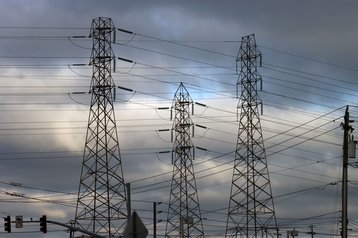The UK’s National Energy System Operator (NESO) said that uncertainty in the data center market makes forecasting grid growth challenging.
In its annual Future Energy Scenarios (FES) forecast, it said that data center energy use could be dramatically different in the years to come – although it expects a surge in demand, no matter which scenario occurs.
“Data center demand in Great Britain is estimated at 7.6TWh from the 2.4GW connected facilities, mainly for traditional services such as banking, which often requires close proximity to London,” NESO said.
As more AI data centers come online, which may not be so latency sensitive (a matter of debate), that number is set to surge across the country.
“High uncertainty on future growth of data centers leads to their 2050 demand ranging from 30-71 TWh,” the grid operator said.
A lot of that uncertainty is over the question of how many data centers will be built in the UK, “compared to other competitive global markets.”
Unmentioned are broader unknowns about the pace of AI investment over the next 25 years, and power requirements of future chip technologies. Successive governments may not be as bullish on data center developments as the current one.
The UK Labour government has pushed for a rapid increase in data center deployments in the country, this week calling for 6GW of AI facilities by 2030. Some of those facilities will be in Scotland and Wales, it said.
NESO concurred: “With sufficiently strong locational signals, we anticipate a maximum of 20 percent of future data center demand could be located in Scotland, helping reduce network constraints.”
Also critical for reducing constraints is better demand flexibility. “This includes shifting demand with thermal storage for high temperature heat requirements or cooling demand in data centers,” NESO said.
More broadly, it said that electric vehicles should support the grid, while consumers should be encouraged to use energy during off-peak times.
The FES report is an update on last year, with forecasts increased due to a faster-growing population and more aggressive uptake of electric vehicles.
NESO also reduced its forecast for how much more efficient it expected data centers to become, based on stakeholder feedback. It also increased how fast it expected data centers to ramp up to full power.
“Maximum data center demand has also been increased.”
Read the orginal article: https://www.datacenterdynamics.com/en/news/uk-grid-operator-high-uncertainty-on-data-center-growth-makes-forecasting-hard-could-range-from-30-71twh-by-2050/







